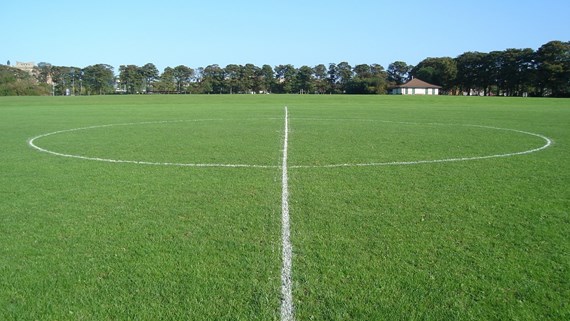What schools need to know about head injuries caused by contact sports
Insight

As well as a return to in person schooling, 8 March 2021 will see outdoor after-school sports and activities resume. Plainly the positive impact of sport on the physical and mental health of children and young people is enormous and many schools will, rightly, be eagerly awaiting the return of sports training and fixtures. However, contact sports like rugby, football and lacrosse carry risk to children. This article aims to set out some of the latest scientific and legal developments regarding sport related head injury.
The issue
In December 2020, the story broke that eight former professional rugby players, all under the age of 45, are considering legal action after being diagnosed with early onset dementia. Growing evidence of links between rugby and dementia led to media articles renewing calls for collision rugby to be banned in schools.
Graham Kirkwood, Institute of Health at Newcastle University, urged England’s governing body, the Rugby Football Union (RFU), to ban tackles, rucks, and mauls from the game. He also encouraged schools to stop making rugby compulsory.[1] Mr Kirkwood criticised the current RFU guidance for focusing on the management of concussion injuries rather than on how to prevent them.
Around the same time, Dr Adam White, a lecturer in Sport and Coaching Sciences at Oxford Brookes University led a group of academics in urging the UK’s Chief Medical Officer to ban tackling in school rugby. He said, “We should be prioritising brain health and mental health of young people before we even consider thinking about rugby union as a game”.[2]
This is not a new issue and not one confined to rugby. For example, in 2017 former footballer Alan Shearer fronted a BBC documentary which investigated possible links between football and dementia (eg through heading the ball). His motivation for making the film arose from a concern that rates of dementia appeared to be higher in retired footballers than in the general population.
In February 2020, new Football Association (FA) guidelines advised coaches that there should be “no heading in training in the foundation phase” which covers primary school children or under-11 teams. The guidelines also put limits on how much heading older children should do during training.[3]
The risk
Playing sport increases the individual’s risk of falls and collisions with objects or other players. These incidents can cause concussion, a type of brain injury.
Concussions happen because the brain is soft. The body protects it by cushioning it in cerebrospinal fluid inside a hard skull. Because the brain floats in the fluid, it can move around the skull. A fall or collision can cause the brain to bang against the skull and become bruised. It can also tear blood vessels and injure nerves. These injuries can cause a concussion, a temporary loss of normal brain function.
Repeated episodes of small concussion (sometimes called sub-concussion) can cause significant changes to the structure and function of the brain in a condition known as Chronic Traumatic Encephalopathy (CTE). The symptoms of CTE include memory loss, depression, and progressive dementia. It is particularly associated with contact sports and most of the available studies are based on ex-athletes.[4]
Concussion has also been linked to dementia more generally. A study published in The Lancet in April 2018 was one of the largest of its kind to look at the link between dementia risk and traumatic brain injury (TBI).[5]
A TBI is defined as any head injury that disrupts brain function. A concussion is classified as a mild TBI. The Danish and American researchers concluded that the younger a person is at the time of the injury, the greater their risk of developing Alzheimer’s and other forms of dementia.
Their analysis of health records for 2.8 million people aged over 36 years showed that the risk of developing dementia over the following thirty years was 63 per cent higher for individuals who had a TBI in their twenties, compared with those who had no such injury. If the injury was sustained when they were in their thirties, the risk increased by 37 per cent.
The dementia risk also increased with the number and severity of the TBIs sustained. Just one mild TBI was linked with a 17 per cent greater risk of dementia. In respect of multiple TBIs, a person who sustained one TBI was at a 22 per cent greater risk of developing dementia after the age of 50, compared with someone who had never sustained a TBI. For someone who had sustained two injuries, this risk increased by 33 per cent and for five or more TBIs, the risk rose by 200 per cent.
Jonathan Scott, from University College London’s Institute of Neurology, said the research provided the best evidence yet that traumatic brain injury is a risk factor for dementia. Although further research was required to differentiate the effect on the brain of different types of injury (eg sports related concussion), “this study reinforces the importance of trying to prevent injury to the brain”.[6]
Another study published in May 2018 in JAMA Neurology suggested that concussion, even without a loss of consciousness, was associated with a 2.4-fold increase in the risk of dementia.[7] The study was one of the largest of its kind, covering 350,000 US war veterans, although its findings may not necessarily translate to the general public.
Risks of concussion in rugby may be even greater for women than men.[8]
The study which led to the change in the FA guidance was published in October 2019 by the University of Glasgow.[9] It found that former professional footballers were more likely to die of degenerative brain disease and five times more likely to die from Parkinson’s disease.
Although there was no evidence in the study that specifically linked incidence of the disease with heading the ball, the FA said its new guidance had been issued to “mitigate against any potential risks”.[10]
Others have, in the past, been less cautious. For example, in 2017 World Rugby stated that the claim that banning tackling in school rugby could reduce the number of concussions and head and neck injuries was “simply not supported by the data” and the calls for action were “extreme and alarmist”.[11] Similarly, in a statement released in December 2020, the RFU stated, “while there is an element of risk to playing any sport, the RFU rules ensure maximum possible safety for children, allowing players the time to learn rugby basics before contact is gradually introduced. Playing rugby provides significant physical and mental health benefits”.[12]
Legal case examples of schools and sports
The duty of a schoolteacher goes beyond that of a reasonable parent at home with responsibility for the care of the family. This “enhanced duty” arises from factors such as the low ratio of teachers to children, the school environment and equipment, and from children interacting with other children who might act unpredictably and sometimes dangerously.[13]
Such a duty does not oblige a school to reduce all risks to the lowest level reasonably practicable. Rather, each situation requires a measure of discretion and judgement. Courts are generally slow to substitute their own judgment and condemn a decision as negligent, where the teacher has knowledge of the school, the environment, the particular children, and experience.[14]
If the performance of a particular function of a school is delegated to an independent contractor, it is likely that the school’s duty of care will be viewed as non-delegable, ie the school retains responsibility to ensure care is taken on its behalf.[15]
The Department of Education has published guidance on a school’s health and safety responsibilities and duties. These arise primarily from the Health and Safety at Work Act 1974 and the Management of Health and Safety at Work Regulations 1999.[16]
An assessment of risk which guides practice and policy in different areas of a school’s activities is an essential element of the discharge of both a school’s statutory and common law duties of care.
Looking at examples of cases concerning sport in schools
A school was liable for injuries to an opposing player in a school rugby match, which were caused by a boy who was over the age group for the match and whose superior size, weight and maturity was found to have contributed to the injury.[17]
However, a 15 year old pupil failed to establish negligence against her school for dental injuries sustained when she was struck by a hockey stick whilst playing a school match.[18] The school had recommended that she use a mouth guard and had warned her sufficiently of the risks, but she had chosen not to wear one. The court’s view was that the school had exercised reasonable care, taking into account the magnitude of the risk, the likelihood of injury, the gravity of the consequences and the cost and practicability of avoiding the risks. The age and maturity of the child were highly relevant factors, as was evidence that the International Hockey Federation did not mandate mouth guards to be worn.
An experienced school teacher was not negligent when, after assessing the level of risk, she allowed her pupils to run from the school changing rooms to a sports pitch for a PE lesson. She had taken into account that the school estate was well managed, the environment was controlled, the pupils were familiar with the route, well behaved and had been told to be aware. It was not inherently dangerous for children to run provided that they were careful, and in schools all over the country children were allowed to run to sports lessons.[19]
A referee of an under-19s rugby match was however liable for injuries caused to a player when his neck was broken in a scrum which collapsed. Rules in place at the time required a phased sequence of engagement to be followed strictly to prevent scrums collapsing. The referee failed to ensure that the standard sequence was followed and therefore failed to demonstrate the exercise of reasonable care.[20]
Points for schools to consider
Playing sport as part of an active lifestyle has important benefits for health. Physical education programmes of study are also part of the national school curriculum. However, schools have choices about the sports which pupils play. As stated by the RFU, “PE in school is compulsory however rugby is not … it is up to schools how they organise their PE curriculum…”.[21]
Concussion is a risk in many sports, although arguably a greater risk in contact sports such as rugby, football, and lacrosse. The risk involved in specific school sports should be considered within a risk assessment and ideally, as many schools have, in a “head injury and concussion prevention and management” policy. The risk assessment should inform what level of provision of contact sport they are comfortable in undertaking a duty to discharge safely - if any. Once risks are identified schools need to ensure they have adequate measures in place to mitigate them, including, for example, safety protocols, appropriate children to staff ratios and staff training.
In any individual situation, an assessment of whether a school has taken “reasonable care” to ensure the health and safety of its students is likely to take into account the relevant guidance from the applicable sport federation, and the extent to which the school followed it. The more prescriptive a sports’ governing body rules become, the more defined the school’s duty is and correspondingly, the greater scope for not discharging it properly.
Schools should therefore be aware of available resources from sports federations and build these into their policies and protocols as appropriate. For example, the RFU runs the HEADCASE programme which aims to increase understanding of, and provide information about, concussion. Free resources are available on its website, including e-learning modules and age grade management guidelines.[22]
If schools follow federation guidance, they must be aware when it changes and keep pace. For example, the FA’s guidance about heading the ball in football practice. There are also likely to be further developments and changes as a result of the recent publicity linking rugby to dementia.
It will also be important to check the position of the school’s insurers. Currently most insurers are likely to be reassured enough to follow the position permitted by the sports’ governing body guidance. However, schools should check their policies and ensure that all policies and documents are retained so that if future claims arise, it will be possible, in much the same way as with historic abuse claims, to check the policy cover in place at the time. Ultimately if insurers start being more specific about what they will and won’t insure, that will be determinative of what sports a school can offer.
Gaining a pupil’s informed consent to participate in a sport is also an increasingly important element of the demonstration of reasonable care. However, schools cannot rely solely on that consent to avoid liability for personal injury.
As adults, the decision on whether to take part in a particular sport depends on how we weigh risks and benefits and deal with uncertainty. Children, however, must rely on responsible adults to make these judgements on their behalf, until they are deemed Gillick competent and able to decide whether to participate themselves.
It is unwise to compel children to play sports, particularly contact sports, where they or their parents have not consented for them to play. The school parent contract, typically signed when a child is not Gillick competent, but, like other consents (eg, data privacy), can be trumped by individual wishes of the pupil when they are Gillick competent, should allow for consent for contact sports to be withdrawn and allow flexibility for schools to deal with those instances on a case-by-case basis.
Any consent must be properly informed. Schools need to provide enough information about the relevant issues and the risks involved in the sport to allow informed decisions to be made. If participation in a general sports programme is a non-negotiable part of a school’s contract, schools need to be clear about the options available to pupils who do not consent to playing contact sports: are alternative non-contact versions of the sports or alternative activities available? If the school cannot offer alternatives, does the choice of sport need to change for all pupils or is consent to participation in contact sports a mandatory requirement of attendance at the school?
These are complex issues. For schools with a long history and tradition of participation in particular contact sports, a discussion of these issues may seem an unwelcome cultural shift. Another way of looking at this issue is through the lens of a school’s duty to safeguard children from harm, or the risk of harm, which includes physical harm. Schools now rightly place safeguarding at the centre of their culture and practice. The approach to contact sports needs to be in line with that approach.
Some schools have already made the decision to remove certain contact sports from their curriculum. For example, Jamie Johnston is a former rugby player for Harlequins, Bath and Bristol and now director of co-curriculum and athletics at the International School in Egham. Such was his level of concern about links between rugby and dementia that he banned collision rugby at his school in 2019 and replaced it with touch rugby. Quoted in the Guardian, he said, “I would not allow my own children to play and I cannot, in good conscience, encourage schoolchildren to play the game in its current form. I feel very conflicted because rugby has obviously been a big part of my life”.[23]
With special thanks to Sophie Beesley, barrister at Old Square Chambers, for co-authoring this article.
If you require further information about anything covered in this briefing, please contact Katie Fudakowski, or your usual contact at the firm on +44 (0)20 3375 7000.
This publication is a general summary of the law. It should not replace legal advice tailored to your specific circumstances.
© Farrer & Co LLP, March 2021
Footnotes:
[1] The Guardian, view here
[2] Sky Sports, view here
[4] NHS, view here
[5] Fann JR, Ribe AR, Pedersen HS, Fenger-Grøn M, Christensen J, Benros ME, Vestergaard M. Long-term risk of dementia among people with traumatic brain injury in Denmark: a population-based observational cohort study. Lancet Psychiatry. 2018 May;5(5):424-431. DOI: 10.1016/S2215-0366(18)30065-8
[6] News Medical, view here
[7] Barnes DE, Byers AL, Gardner RC, Seal KH, Boscardin WJ, Yaffe K. Association of Mild Traumatic Brain Injury With and Without Loss of Consciousness With Dementia in US Military Veterans. JAMA Neurol. 2018;75(9):1055–1061. DOI:https://doi.org/10.1001/jamaneurol.2018.0815
[8] The Guardian, view here
[10] BBC, view here
[11] BBC, view here
[12] The Guardian, view here
[13] Pook v Rossall School [2018] EWHC 522 (QB)
[14] Ibid
[15] Woodland v Essex CC [2013] 3 WLR 1227 SC
[16] Gov.uk, view here
[17] Mountford v Newlands School [2007] EWCA Civ 21
[18] Murray v McCullough [2016] NIQB 52
[19] Pook v Rossall School [2018] EWHC 522 (QB)
[20] Smolden v Whitworth [1996] EWCA Civ 1225
[21] Sky Sports, view here
[22] England Rugby, view here
[23] The Guardian, view here







